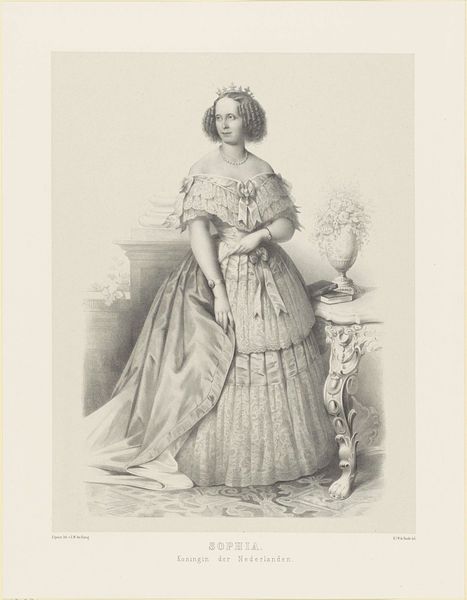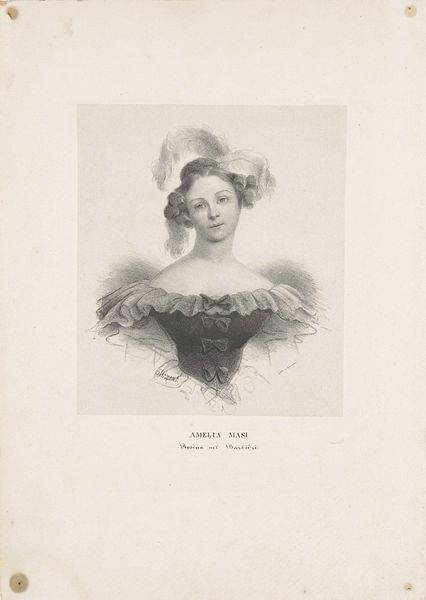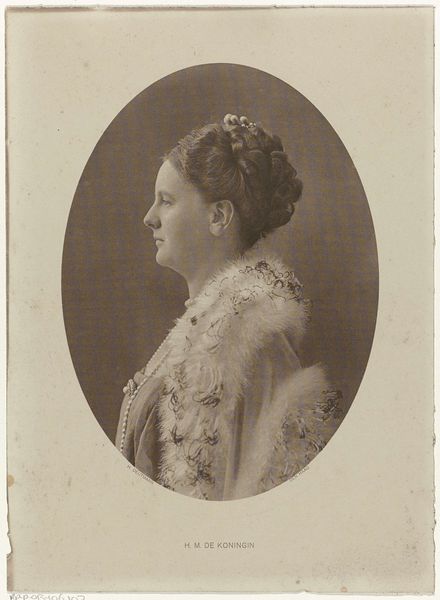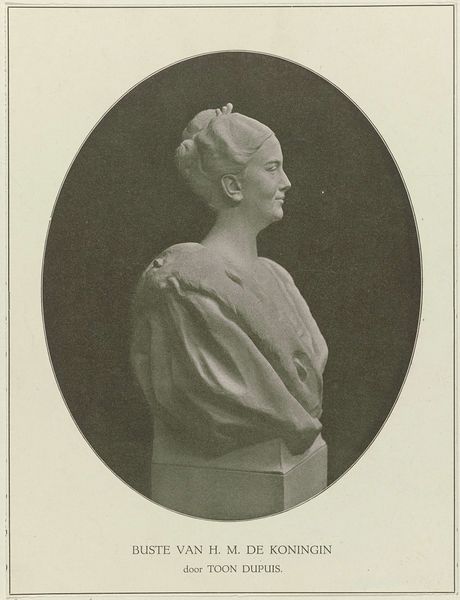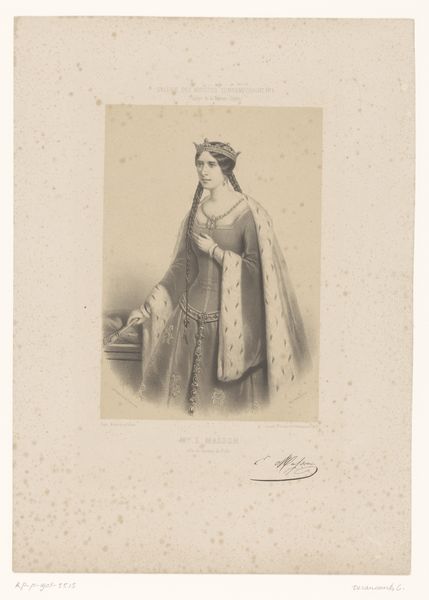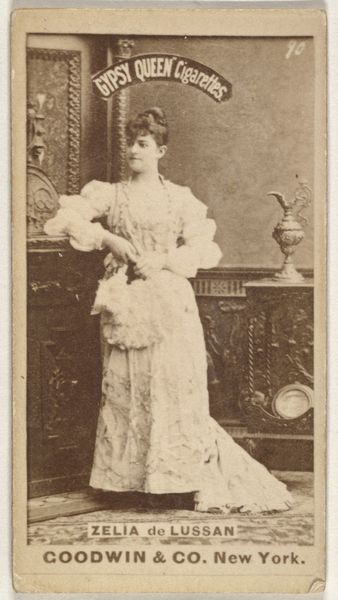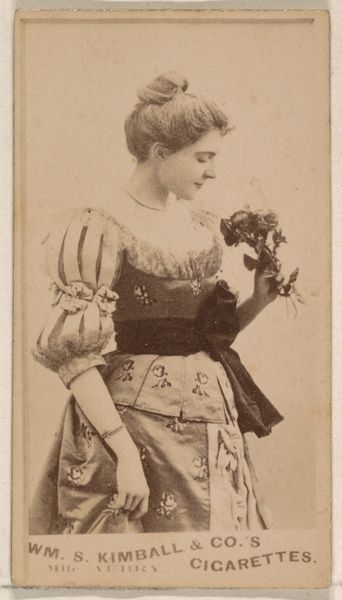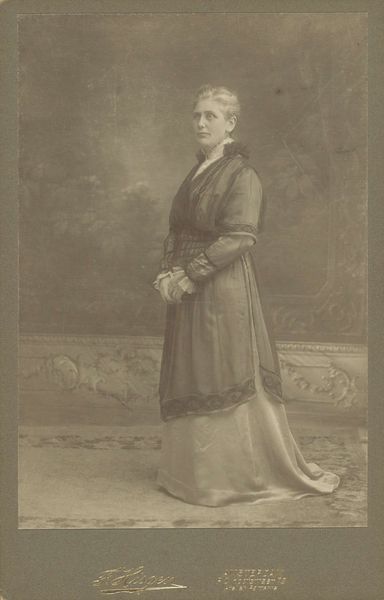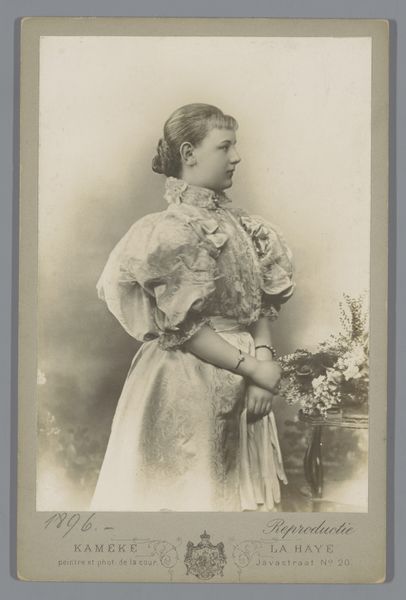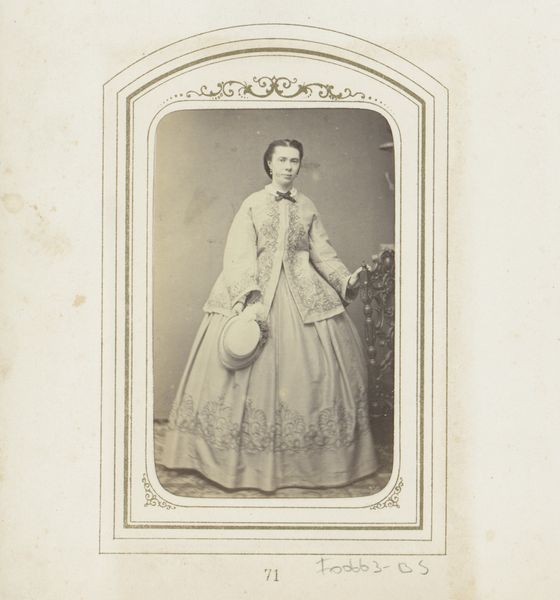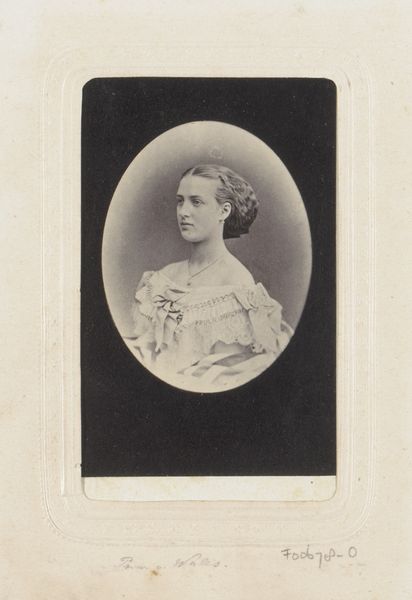
print, photography
#
portrait
# print
#
photography
#
history-painting
#
academic-art
Dimensions: height 632 mm, width 539 mm
Copyright: Rijks Museum: Open Domain
Editor: Here we have a photograph, "Portret van Wilhelmina, koningin der Nederlanden," dating from around 1896 to 1908, its creator remaining anonymous. It's striking how the young queen's formal pose seems to project both innocence and a regal bearing. As an iconographer, what catches your eye in this portrait? Curator: I’m drawn to how this image seeks to solidify the idea of monarchy through carefully chosen symbols. Look at Wilhelmina’s attire, particularly the high collar and puffed sleeves, hallmarks of royalty, but also constraints that suggest a carefully constructed role. Notice also the flowers on the small table: can you identify them, and what do you think their presence might signify? Editor: They seem like lilies of the valley... maybe alluding to humility, or the return of happiness? Curator: Precisely. These carefully chosen flowers create an association. A visual language of cultivated virtues that, alongside Wilhelmina's controlled posture, evokes duty and a prepared future, as well as personal grace. Does the photograph suggest an individual, or an emblem? Editor: More of an emblem, I think. Almost like a carefully constructed idea, rather than just a likeness of her. The soft focus of the photograph almost adds to that idealised view. Curator: Exactly. Now think about the framing—the ornamental border—does it add or detract from that symbolic layering? What kind of visual echo does it produce for the viewer? Editor: It certainly amplifies it, adding to the overall sense of formality and tradition. I hadn't thought of it in those terms before, as an active component contributing to the portrait's meaning. Curator: Consider this: royal portraiture in this era acted as both a display of power, and a reassurance during turbulent times. By considering the historical context, it changes our reading of these photographs as historical documents. Editor: Absolutely. Thanks, I’ll definitely keep that in mind.
Comments
No comments
Be the first to comment and join the conversation on the ultimate creative platform.
